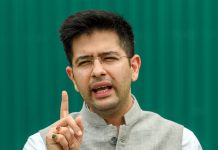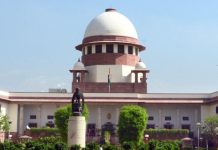 India is slowly but steadily approaching the Baloch people on their mission to make Balochistan a sovereign nation out of Pakistan. From the political class to civil society groups, the message for supporting the freedom movement of Balochis has grown visible and stronger in the recent past that inspires the Baloch freedom fighters to express confidence in the Indo-Baloch relationship.
India is slowly but steadily approaching the Baloch people on their mission to make Balochistan a sovereign nation out of Pakistan. From the political class to civil society groups, the message for supporting the freedom movement of Balochis has grown visible and stronger in the recent past that inspires the Baloch freedom fighters to express confidence in the Indo-Baloch relationship.
The significant development started when Prime Minister Narendra Modi had mentioned Balochistan, referring to the relentless freedom struggle by Balochis since 1948 in his 2016 Independence Day speech from the courtyard of historic Red Fort in New Delhi. It may not directly influence the foreign policy of New Delhi towards Islamabad, but a positive gesture spread across the liberal Indians, who preferred to support the Balochis, understandably secular in nature.
Balochis, who are mostly Muslim and presently on a warpath against the Islamic Republic of Pakistan for their liberation claimed that Baloch people got independence from the imperialist British forces on 11 August 1947, which is before India and Pakistan. Balochistan remained a sovereign nation till 27 March 1948. And since then Baloch people are under Pakistani occupation resulting in unleashed atrocities over them.
“After enjoying nine months of independence, Balochistan was treacherously occupied by the Pakistani forces,” claimed Baloch nationalist leader Hyrbyair Marri and also the president of Free Balochistan Movement.
Speaking to Asia Sentinel recently Marri added that it was done by securing the instrument of accession of Kalat State to Pakistan signed under duress by Mir Ahmed Yar Khan, the Khan of Kalat, which was later endorsed on 31 March 1948 by Muhammad Ali Jinnah, then Governor-General of Pakistan.
“But Kalat was one of a district which was also part of Balochistan. Khan had simply no authority to decide on behalf of the entire Balochistan to accede to Pakistan. Since then, a myth has been systematically created by Islamabad that Baloch wanted to join Pakistan, which is a blatant falsehood,” asserted Marri.
He stated that Noori Naseer Khan drew Balochistan’s political boundaries in the mid-18th century and even before that it was a free country, and they have plenty of historical records, documents, and maps to prove the case to the international community.
Speaking about the rampant exploitation of Balochistan’s resources like natural gas, coal, gold, copper and various minerals Marri highlighted that even though Balochistan has small population (around 13 million), Baloch people are still deprived of regular electricity, safe drinking water, and other civic amenities, etc, whereas its infant mortality rate is very high and literacy rate is too low.
Marri was also critical to Iran (after Pakistan) as both the Islamic countries, according to him, did not mind their differences and were on the same page when it came to the oppression of Baloch people. Once colonized by Europeans, Balochistan is now under the occupation of Pakistan and Iran, which compelled thousands of Balochis to sacrifice their lives for a united and independent homeland.
But Pakistan has been especially perfidious, lecturing India about Kashmir issues, while over twenty thousand Baloch have disappeared in the last decade. Even women, children and the elderly are not spared by the Pakistani army, lamented Marri. He also added that over 2,000 journalists, teachers, lawyers, and cultural personalities were forcibly abducted, tortured and even killed in a decade.
Laying bare the double standards of Islamabad over Kashmir even before New Delhi’s abrogation of Article 370 from Jammu and Kashmir, Marri stressed that it is Punjabi Pakistan forces who are responsible for the killing of the highest number of innocent Muslims in Balochistan.
“India, on the other hand, lost its territory in Punjab following Partition, while a part of Kashmir was grabbed by Pakistan. India has legitimate claims to Pak occupied Kashmir as well as Gilgit-Baltistan,” stated Marri, who was born in Quetta, capital of Balochistan, and presently living as an exile in London.
A former member of Balochistan provincial assembly and also a Baloch minister, Marri narrated that Baloch patriots have fought for decades to free their beloved country from Pakistan’s illegal occupation and the time has perhaps come for India to lend an active helping hand to their cause as a trusted ally.
“We need India’s friendship, support, and help. But rather than using Balochistan independence struggle as a means to checkmate and counter Islamabad, New Delhi should look at Balochistan as an all-weather ally and India should see post-independence secular and stable Balochistan which will be one of the factors in bringing tranquility in the region,” pointed out Marri.
Claiming that Baloch people are generous and tolerant, Marri declared that Pakistan was created in name of Islam by some Indian Muslims but in reality, it has nothing to do with the religion. Pakistani Punjabi Muslim establishment used Islam only for their political gains. If they had any regard for human rights or sympathy to fellow Muslims, they would have never occupied Balochistan and started genocide.
He referred to a Hindu temple in Balochistan and described how Muslim Balochis also take care of the Shakti Peeth (named Hinglaj Mata Mandir). Positioned in a mountain cave on the bank of Hingol river inside Hingol National Park, which is adjacent to the Makran coast of the Arabian Sea in south-west Pakistan, the temple has an idol of Goddess Shakti (Sati), accompanied by Bhairava (a form of Lord Shiva).
The daughter of Daksha Maharaj, Sati married Shiva against her father’s wish. Mythology narrates, proud king Daksha did not invite Sati (Parvati) and Mahadev for an important Yagna. However, she wanted to attend the rituals, where Daksha humiliated her husband following which Sati immolated herself at her father’s palace.
Angry Mahadev soon arrived there and punished Daksha cutting his head. Then Maheswar took Sati’s mortal remains on his shoulder and started wandering with Tandava Nritya (dance of destruction).
With an aim to douse Shiva’s rage, Lord Vishnu cut the mortal remains into 51 pieces through his Sudarsan Chakra. Body parts of Sati fell in various localities on Earth and all locations later emerged as shrines for Hindus.
It is believed that Sati’s head with Hingul (vermillion/sindoor) had fallen on the place (now under Balochistan) where the Hinglaj temple is surfaced. The most sacred part (Yoni) fell on Nilachal hills of Guwahati (then a part of Kamrup empire), where the famous Kamakhya temple is located.
More recently, a northeast India based nationalists’ group urged the Union government in New Delhi to pursue with the Balochistan authority for revitalizing the Hinglaj Mata Mandir. Patriotic People’s Front Assam (PPFA) argued that the Hinglaj temple is a revered place for Hindus where thousands gather to pray to Goddess Shakti.
“We have appealed to PM Modi to take a personal interest to enhance diplomatic efforts to revive the Hinglaj temple and pave easier ways for Indian pilgrims to visit the shrine. As the
Baloch nationals are legitimately secular, they should also be taken into confidence in fulfilling the mission,” said a PPFA statement.
Now Marri, along with other Baloch nationals, has taken a task for setting up Indo-Baloch friendship platforms in different countries, more precisely in India even though it is a Hindu majority nation. But it is quite amazing that the Baloch freedom struggle has still not mingled with Islamist extremism.
On various social networking sites, the Bloch nationalists have started wishing Indian people on auspicious occasions including the Republic & Independence Days. They are clear in mind while appealing to the Indians as brothers and sisters saying Balochis are thankful to India for its increasing solidarity and supports.
Indians are also being urged to be the voice for disgraced Baloch people in different forums including the United Nations. Many of them even chanted typical Indian Hindu slogans like Bharat Mata Ki Jai or Jai Hind.
letters@tehelka.com













